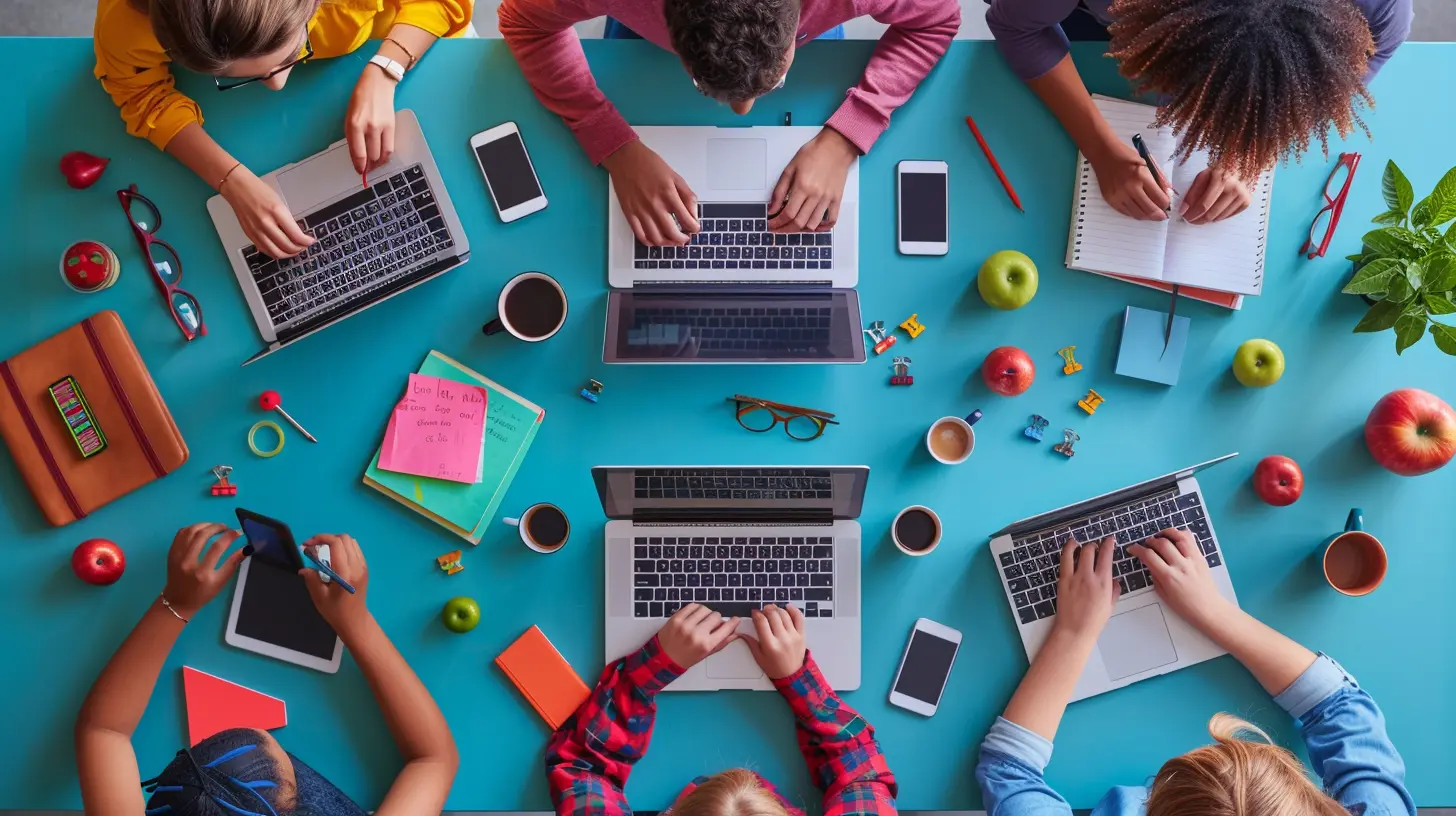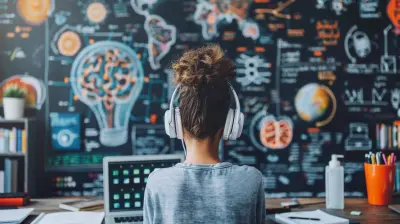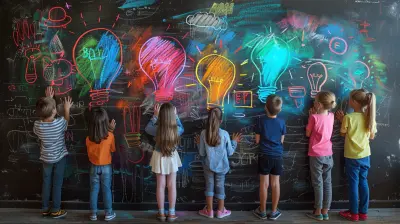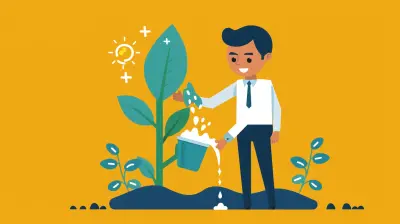Empowering Students with Digital Tools for Creative Expression
1 June 2025
In today's tech-driven world, creativity is no longer confined to paper and pencil. With the rise of digital tools, students have more opportunities than ever before to express themselves in ways that were once unimaginable. The traditional classroom has evolved, and so have the means for students to showcase their ideas. But, how exactly are these digital tools empowering students? Let’s dive deep into how technology can ignite the creative spark and help students explore, create, and innovate like never before.

The Shift to Digital Learning
Before we get into the creative side of things, let's talk about the shift from traditional to digital. Over the last decade, education has undergone a massive transformation. Gone are the days when learning revolved solely around textbooks, chalkboards, and long lectures. Today, students have access to a wide variety of digital tools that not only make learning more engaging but also foster creativity.Think about it—who would have thought 20 years ago that a student could design a website, create a podcast, or even make a short film as part of their school project? The shift to digital learning has not only opened new doors for creative expression but has also made learning more dynamic and personalized.

What Are Digital Tools?
When we talk about digital tools, we’re referring to any software, applications, or platforms that students can use to enhance their learning experience. These tools can range from basic word processors like Google Docs to more advanced platforms like Canva, Adobe Creative Cloud, and even coding software like Scratch or Python. They are designed not only to make tasks easier but also to push the boundaries of what students can create.Digital Tools Aren’t Just for Tech-Savvy Students
One common misconception is that digital tools are only for students who are already inclined toward technology. This couldn’t be further from the truth. In reality, these tools are designed to be user-friendly and accessible for all students, regardless of their tech expertise. Whether a student is a budding artist, a writer, or someone who’s never touched a computer before, there’s a digital tool out there that can help them express themselves creatively.
How Digital Tools Empower Students
Digital tools don’t just make tasks easier—they empower students in ways that traditional methods could never. Here’s how:1. Breaking Down Barriers to Creativity
Not everyone is great at drawing, writing, or crafting by hand. With digital tools, students who might struggle with traditional methods of expression can still participate and create high-quality work. For example, a student who isn’t skilled at drawing can use tools like Procreate or Adobe Illustrator to create professional-grade artwork. Or, a student who finds it hard to express themselves through writing might excel in video editing or podcast creation.Digital tools break down those barriers, making it easier for students to explore their creativity in ways that work best for them. They level the playing field, ensuring that every student has the tools they need to succeed.
2. Encouraging Collaboration and Teamwork
Collaboration is one of the pillars of creativity, and digital tools make it easier than ever for students to work together on projects, no matter where they are. Platforms like Google Docs, Canva, and Trello allow students to collaborate in real-time, sharing ideas, providing feedback, and building on each other’s strengths.Imagine two students—one in New York and the other in London—working together to create a short film or a presentation. With digital tools, this is not only possible but also seamless. The ability to collaborate with peers from different geographic locations or cultures can broaden students’ perspectives and lead to more innovative outcomes.
3. Providing New Mediums for Expression
When we think about creative expression, we often think about traditional mediums like drawing, painting, or writing. But in the digital age, the list of mediums has expanded significantly. Students can now express themselves through:- Video creation: Platforms like YouTube and TikTok allow students to create content that is engaging, informative, and creative.
- Graphic design: With tools like Canva or Adobe Spark, students can design stunning visuals without any prior experience.
- Music production: Apps like GarageBand and FL Studio make it possible for students to compose their own music, even without access to a physical instrument.
- Podcasting: Tools like Anchor or Audacity enable students to record and edit their own podcasts, allowing them to share their voices with the world.
These new mediums give students an exciting array of options for expressing their ideas and creativity.
4. Boosting Confidence and Engagement
Let’s be honest—traditional learning methods can sometimes feel a bit stale. But when you introduce digital tools into the mix, suddenly learning becomes a lot more exciting. When students create something that they’re proud of—whether it’s a video, a piece of art, or a podcast—their confidence soars.This boost in confidence often translates to higher levels of engagement in the classroom. When students are excited about what they’re creating, they’re more likely to participate actively, ask questions, and dive deeper into the subject matter.
5. Teaching Valuable 21st-Century Skills
In today’s world, creativity isn’t just about art or music; it’s about problem-solving, critical thinking, and innovation. Digital tools teach students these skills in a practical, hands-on way. Whether they’re learning to code, design graphics, or produce videos, students are developing skills that will serve them well in the future.These skills are in high demand in the modern workforce. By using digital tools, students are not only expressing their creativity but also preparing themselves for the jobs of tomorrow.

Popular Digital Tools for Creative Expression
Now that we’ve discussed how digital tools empower students, let’s take a look at some of the most popular tools that students can use for creative expression.1. Canva
Canva is a graphic design platform that allows students to create everything from posters and presentations to social media graphics, book covers, and more. It’s incredibly user-friendly, with a drag-and-drop interface that makes design accessible for beginners. With thousands of templates to choose from, students can create professional-looking designs in no time.2. Adobe Creative Cloud
Adobe Creative Cloud includes a suite of tools like Photoshop, Illustrator, and Premiere Pro, which are used by professionals in the creative industry. While it’s more complex than Canva, it offers a wide range of features that allow students to take their creativity to the next level. Whether they want to edit photos, create animations, or produce videos, Adobe Creative Cloud has the tools they need.3. GarageBand
For students interested in music production, GarageBand is an excellent tool. It’s a digital audio workstation that allows users to create music, record podcasts, and even mix soundtracks. With a wide variety of virtual instruments and loops, students can experiment with different sounds and compose their own music.4. Scratch
Scratch is a coding platform designed for students, particularly those in elementary or middle school. It allows users to create interactive stories, games, and animations through simple coding blocks. It’s a fantastic way for students to learn the basics of coding while also expressing their creativity.5. Google Docs and Slides
Sometimes, the simplest tools are the most powerful. Google Docs and Slides allow students to collaborate in real-time, sharing ideas and editing projects together. While these tools are often used for academic work, they also provide opportunities for creative expression, especially when students are tasked with creating presentations, reports, or even stories.The Role of Teachers in Facilitating Digital Creativity
While digital tools are incredibly powerful, they’re only as effective as the guidance students receive in using them. This is where teachers come in. Teachers play a crucial role in fostering creativity by introducing students to new tools, encouraging experimentation, and providing constructive feedback.Moreover, teachers can help students understand that creativity isn’t just about the final product—it’s about the process. By giving students the space to explore, fail, and try again, teachers can help them develop the resilience and critical thinking skills that are essential for creative problem-solving.
Overcoming Challenges with Digital Tools
Of course, like any technology, digital tools come with their own set of challenges. Not all students have access to the necessary devices or internet connection. Additionally, some students might feel overwhelmed by the sheer number of tools available.However, with proper planning and support, these challenges can be overcome. Schools can work to provide access to devices, and teachers can focus on introducing tools gradually, ensuring that students don’t feel overwhelmed. The key is to create a learning environment where students feel supported and empowered to explore digital creativity at their own pace.
Conclusion: The Future of Creative Education
As technology continues to evolve, so too will the opportunities for students to express themselves creatively. Digital tools are already changing the way students learn, collaborate, and create, and this trend will only continue to grow. By embracing these tools, we can empower the next generation of creators, thinkers, and innovators. After all, creativity is the key to solving the world’s biggest challenges—and digital tools are the gateway to unlocking that creativity.all images in this post were generated using AI tools
Category:
Digital LiteracyAuthor:

Monica O`Neal
Discussion
rate this article
3 comments
Holly McQuillen
Because who needs imagination when you have a tablet, right? Genius idea!
June 7, 2025 at 4:37 AM

Monica O`Neal
Thank you for your comment! Digital tools can actually enhance imagination and creativity, providing new avenues for expression.
Jack Ross
Empowering students with digital tools fosters creativity and enhances their ability to communicate ideas effectively.
June 2, 2025 at 10:23 AM

Monica O`Neal
Absolutely! Digital tools are key to unlocking student creativity and improving communication skills, enabling them to express their ideas more effectively.
Devin Snyder
What a fantastic read! Embracing digital tools truly empowers students to unleash their creativity. Excited to see how these innovations inspire the next generation of thinkers and creators! 🎉💡
June 2, 2025 at 4:58 AM

Monica O`Neal
Thank you! I'm thrilled you found it inspiring. Exciting times ahead for our future innovators! 🎉



